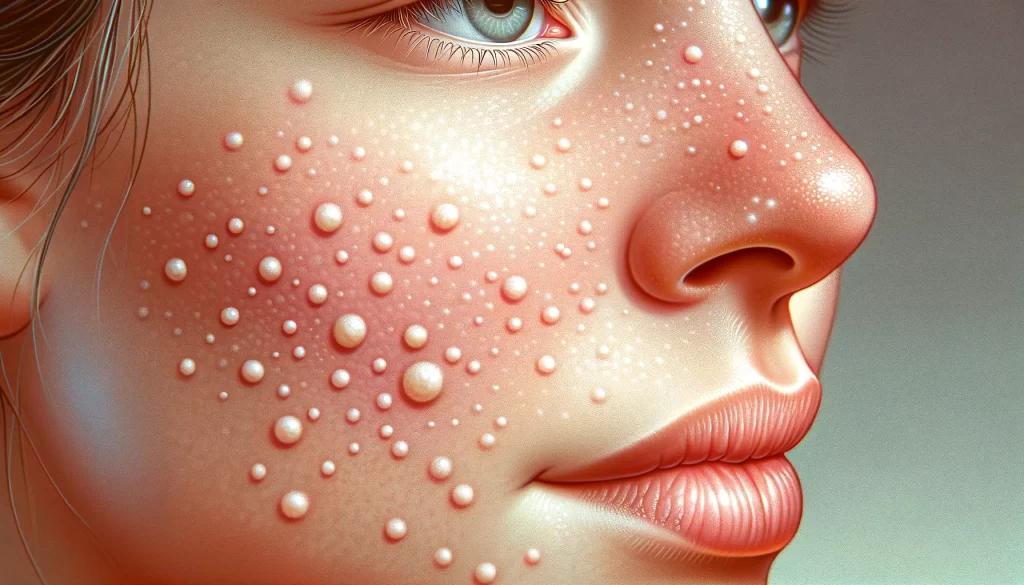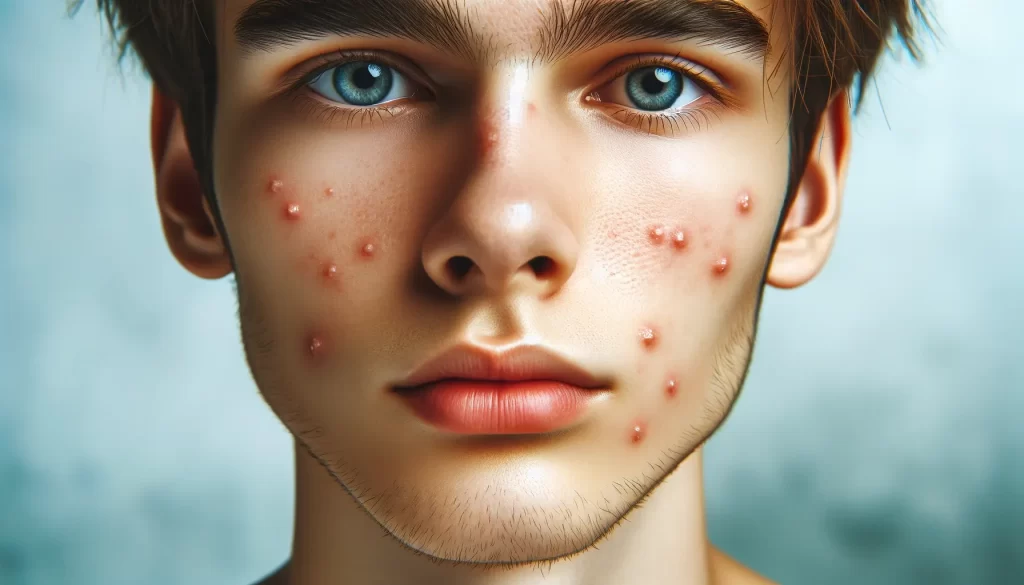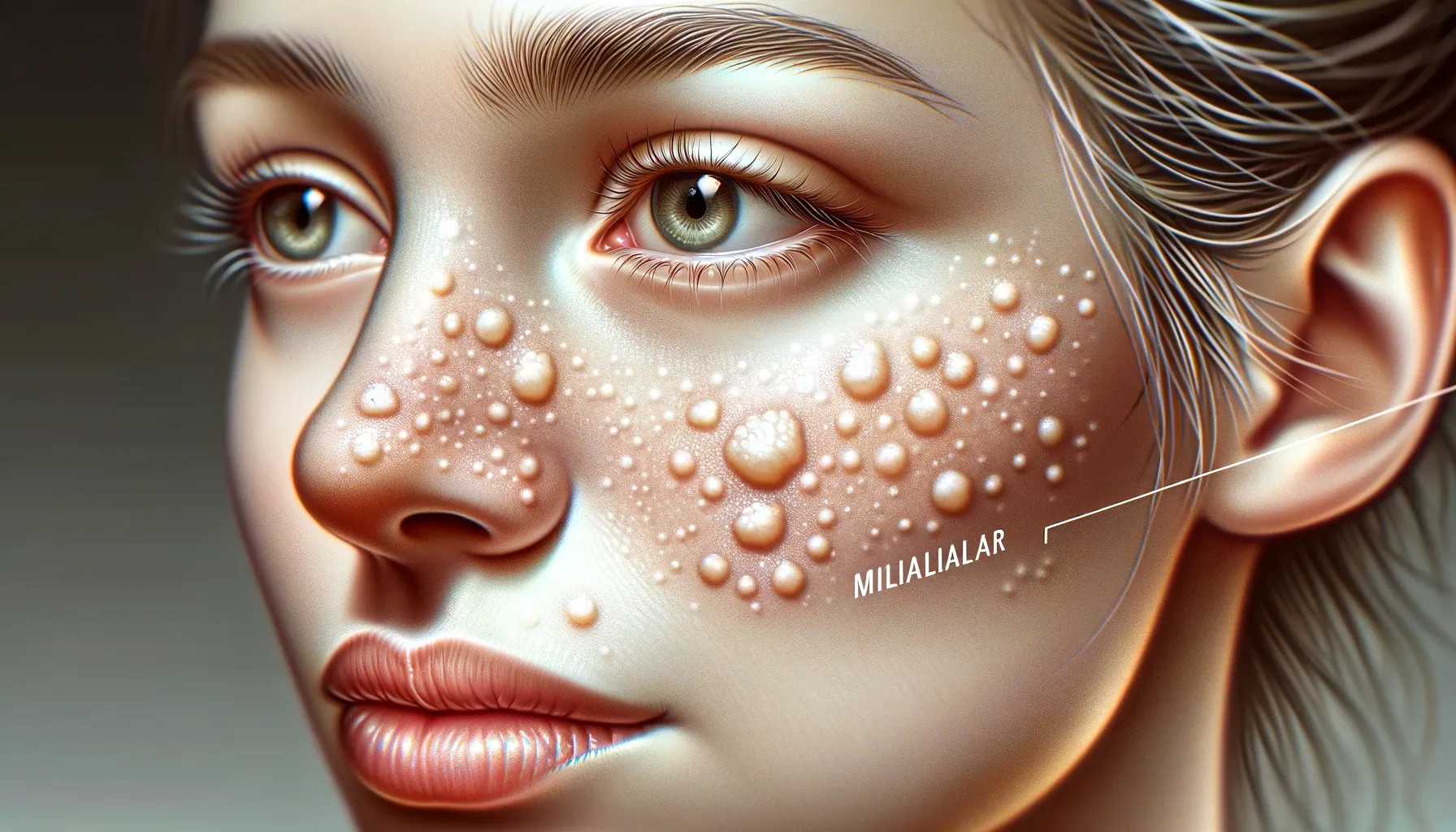What is Milialar: Its Causes, Symptoms and Treatment
Table of Contents
Dive into the enchanting universe of Milialar, where wonder meets adventure. Uncover hidden gems and delightful surprises. Join us on this journey!
Milia, colloquially known as Milialar in Turkey, is a prevalent term describing small, pearl-like cysts that often emerge on the skin surrounding the eyes, specifically on the eyelids. Despite being generally benign, the visual impact of these tiny bumps can be disconcerting. It’s crucial to clarify that milialar is not a variant of acne. In this exhaustive guide, we will navigate the realm of milialar or milia, covering its types, progression, indicators, symptoms, preventive strategies, and available treatment modalities. Rest assured, the information presented is founded on extensive scientific research and expert perspectives, ensuring a comprehensive comprehension of this condition.
Decoding Milia or Milialar: An Insight into its Nature
Milia, or Milialar, manifests as diminutive, dome-shaped bumps typically measuring 1-2 millimeters, akin to a pinhead. These whitish-yellow, pearly cysts exhibit a firm and smooth texture on the skin’s surface, primarily concentrating around the eyes and eyelids. According to studies, Milia emerges when keratin, a protein abundant in skin, hair, and nails, becomes ensnared beneath the skin. Although frequently observed in newborns, adults can also develop milialar, often stemming from skin damage.
Fun Fact: Milia, despite its phonetic resemblance, bears no connection to malaria, a disease caused by a parasite. Read also 55.2 kg to lbs.

Navigating the Milialar Spectrum: Primary and Secondary Milialar
Primary Milia or Milialar
Primary milialar results directly from the entrapment of keratin within the skin, commonly seen in neonates due to immature sweat ducts. Key characteristics include:
- Small, white-to-yellow cysts.
- Predominantly on the face, especially on the cheeks, nose, and around the eyes.
- Generally asymptomatic, often resolving spontaneously in infants within weeks to months.
Secondary Milia or Milialar
On the contrary, secondary milialar arises from trauma or injury to the skin, prevalent in adults after specific skin conditions or procedures. Key features comprise:
- Resembling primary milialar, often appearing in areas of previous injury or procedures.
- Symptoms may align with the underlying cause, such as pain from a burn.
- Duration varies and can persist depending on the cause, necessitating treatments like manual extraction, laser therapy, or medications.
What Sparks Milia or Milialar?
Milia develops when dead skin cells become ensnared beneath the skin, giving rise to minuscule cysts. While commonly appearing on the face, especially around the eyes and cheeks, they can manifest elsewhere on the body. Various factors contribute to milia or Milia development, though the underlying trigger isn’t always discernible. These factors encompass:
- Genetics: Some individuals inherit a predisposition for milia, often running in families.
- Sun Exposure: Prolonged sun exposure can damage facial skin, elevating the risk of Milia.
- Skin Trauma: Injuries such as cuts, burns, abrasions, and blisters may lead to milia during the healing process.
- Certain Medical Conditions: Disorders causing dry skin and inflammation, like eczema, can heighten the risk.
- Medications: Some drugs, such as steroids, may induce milia as a side effect.
- Heavy Creams and Makeup: The use of thick, greasy products can clog pores and induce cyst formation.
Miliary prevalence is highest in newborns, with up to 50 percent developing transient milia that typically resolves within weeks. Maternal hormones are believed to contribute to this in neonates. However, persistent milialar affects about 2.5% of the general adult population, with women more commonly affected than men. The prevalence of milia increases with age, linked to age-related changes in skin cell kinetics and reduced skin elasticity.

Milialar Evolution: A Step-by-Step Process
The progression of milialar follows a specific sequence:
- Skin Renewal: As part of its renewal process, the skin naturally sheds dead cells, occasionally failing to do so properly.
- Trapped Keratin: The trapped cells transform into keratin, accumulating beneath the skin.
- Formation of Cysts: This accumulation gives rise to tiny cysts beneath the skin, resulting in milia.
Expert Insight: Primary milialar, arising spontaneously due to keratin entrapment, is most common around the eyelids, while secondary milialar can stem from trauma, burns, blistering, or ophthalmic conditions.
Identifying Signs and Symptoms
Milia, easily identifiable by its distinct appearance, may manifest as:
- Small, pearly white bumps around the eyes or on the eyelids.
- Dome-formed, easy bumps corresponding to pearls beneath the pores and skin.
- Whitish-yellow or yellowish-white in color.
- Occurring singly or in clusters.
- Typically painless, causing no itching or irritation.
- Persistent for weeks to months or disappearing spontaneously.
- Potential secretion of a waxy, cheese-like discharge if ruptured.
Tip: If uncertainty persists regarding any skin condition or concerns, consulting a dermatologist for a precise diagnosis and guidance is advisable.
Shielding Against Milialar: Proactive Preventive Measures
While complete prevention of milialar may be elusive, adopting the following practices can diminish the risk:
- Utilize oil-free, non-comedogenic moisturizers and makeup.
- Steer clear of heavy, greasy creams and cosmetics around the eyes.
- Engage in gentle cleansing and regular skin exfoliation to unclog pores.
- Exercise caution while shaving, employing proper techniques to prevent skin injuries.
- Embrace daily sunscreen use, limiting unprotected sun exposure.
- Maintain skin hydration to prevent excessive dryness.
- Thoroughly remove makeup before bedtime and discard outdated products.
- Tackle underlying skin conditions like eczema.
- If prone to milia, also known as millia, consider abstaining from intense facials or chemical peels, as they may exacerbate the condition.
Strategies for Combatting Milia: Varied Treatment Options
In most instances, milialar requires no intervention, often resolving naturally within weeks to months. However, if persistence or distressing symptoms ensue, several treatment avenues are available:
- Prescription Retinoid Creams: Formulations containing tretinoin, adapalene, or tazarotene aid in drying out and sloughing off milia.
- Microdermabrasion: Utilizing fine crystals to gently exfoliate outer skin layers and stimulate healing.
- Chemical Peels: Application of a mild glycolic or salicylic acid solution to soften and eliminate lesions.
- Electrocautery: Burning off milialar with a hyfrecator cauterizing device under local anesthesia.
- Manual Extraction: Dermatologists can open the cyst with a sterile needle and extract its contents.
- Cryotherapy: Freezing bumps with liquid nitrogen to eliminate lesions.
- Laser Ablation: Employing laser energy to obliterate cysts.
- Surgical Removal: In select cases, dermatologists may opt for surgical removal, involving cutting open and draining milia, occasionally requiring stitches.
Important Note: This information is furnished for educational purposes, emphasizing the importance of consulting a dermatologist before pursuing any treatment.
Final Thought
In conclusion,Milia, the petite pearl-like cysts prevalent on the skin, are generally innocuous and typically found around the eyes and eyelids. While more commonplace in newborns, adults can also develop them, often linked to skin damage. Milialar exhibits diverse types, influenced by factors such as genetics, sun exposure, skin trauma, medical conditions, medications, and the use of heavy creams and makeup.
For those distressed by Milia, diverse treatment options exist, although many cases resolve naturally. To thwart milia, adopting sound skincare practices, avoiding heavy cosmetics and makeup, and safeguarding the skin from excessive sun exposure is paramount.
This comprehensive guide equips you with a nuanced understanding of milia, covering its types, evolution, indicators and symptoms, preventive strategies, and treatment alternatives. For personalized guidance concerning your skin or milialar concerns, seeking consultation with a dermatologist is strongly advised.


